Occurrence
Record of damage by the fig tree borer, Azochis gripusalis Walker, 1859 (Lepidotera: Crambidae), on fig tree (Ficus carica L.) in the county of Garibaldi, RS, 01/17/2024.
Moth, eggs, caterpillars, galleries, excrement
The moth lays its eggs on the branches or at the base of the petiole during the vegetative period. After incubating for 4 to 6 days, small caterpillars hatch, which penetrate the branches and fruits and build galleries as they feed on the plant tissue. They expel excrement through the entrance hole and, together with silk threads, build protection against rain and natural enemies.
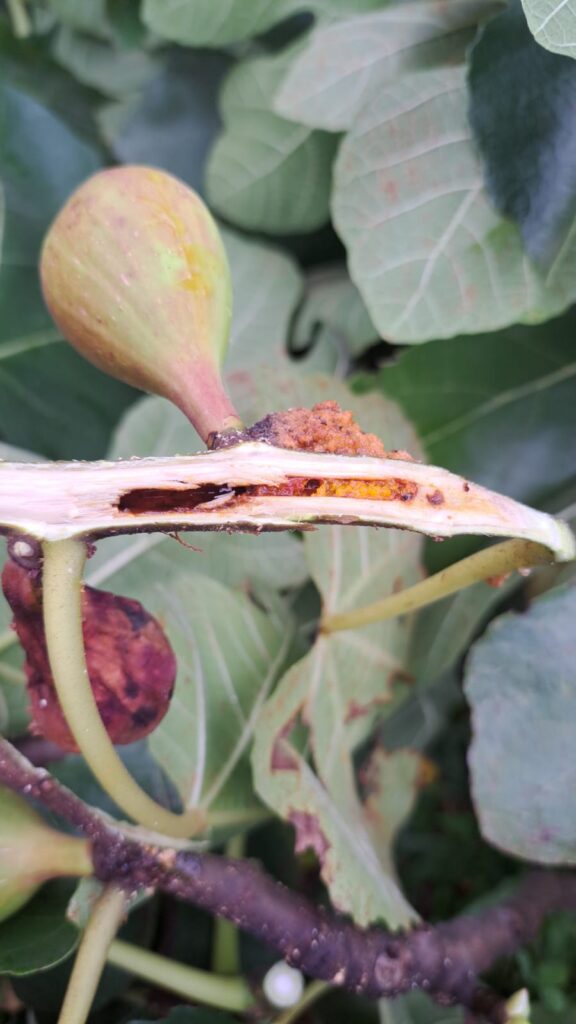
Gallery inside a fig tree branch (Ficus carica L.) built by the borer (Azochis gripusalis (Lepidoptera: Crambidae)); yellow sawdust inside and coming out at one point. Garibaldi, RS, 01/17/2024. Schäffer, N.
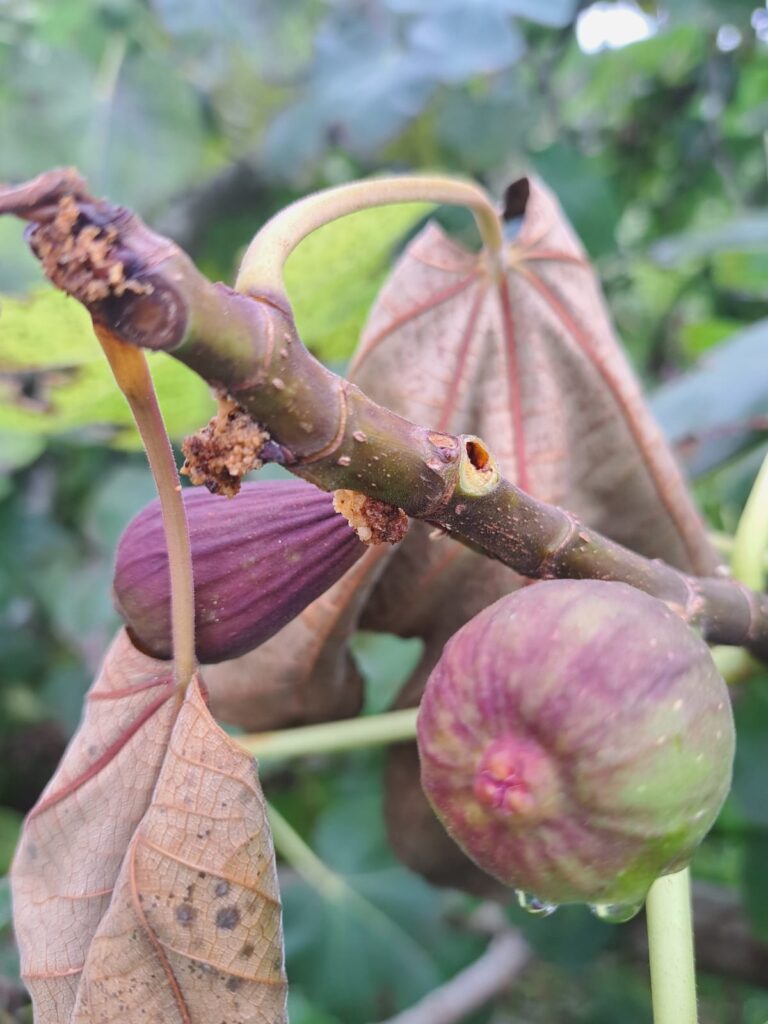
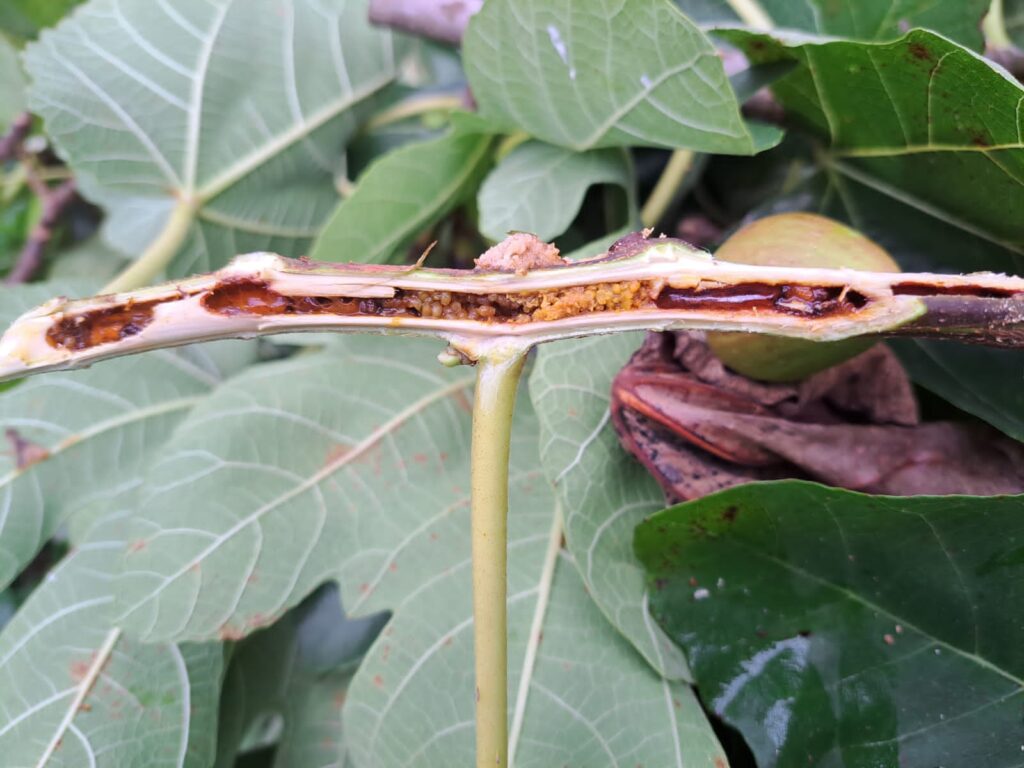
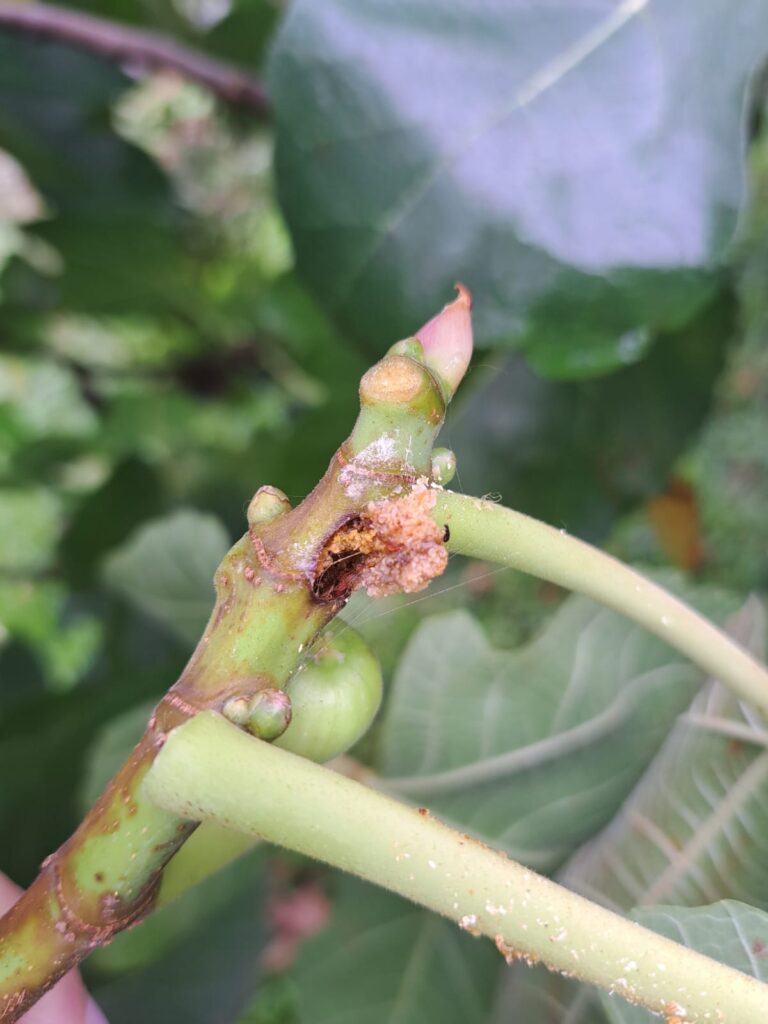
Borer droppings with silk threads that are used for shelter.
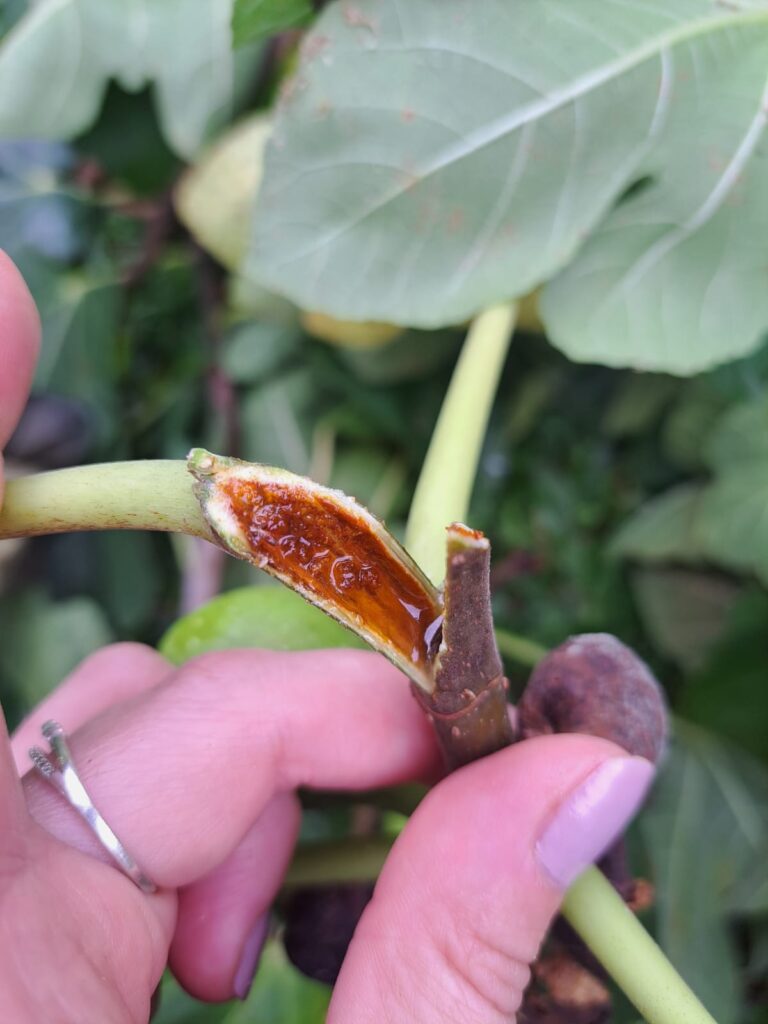
By sectioning the stem, it can be seen that the branch is hollow, as the borer ate the interior, forming galleries.
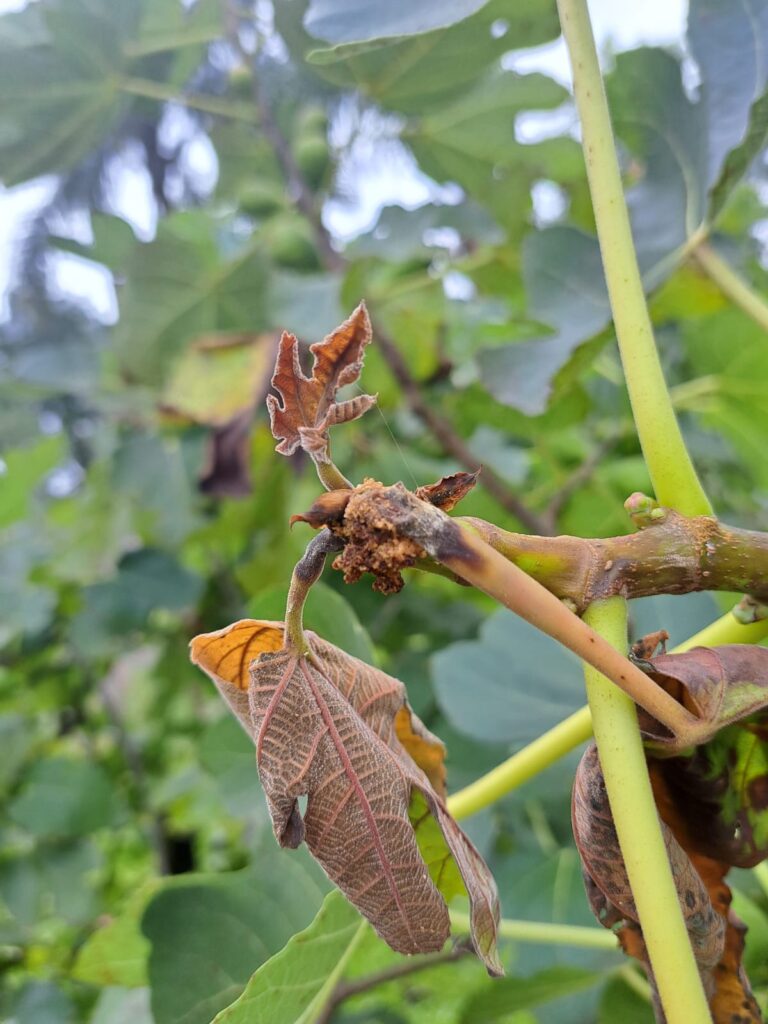
Death of the tip, a typical symptom of the borer, with the presence of sawdust. White growth in the blackened region indicates the presence of a saprophytic fungus, developing in the dead tissue.
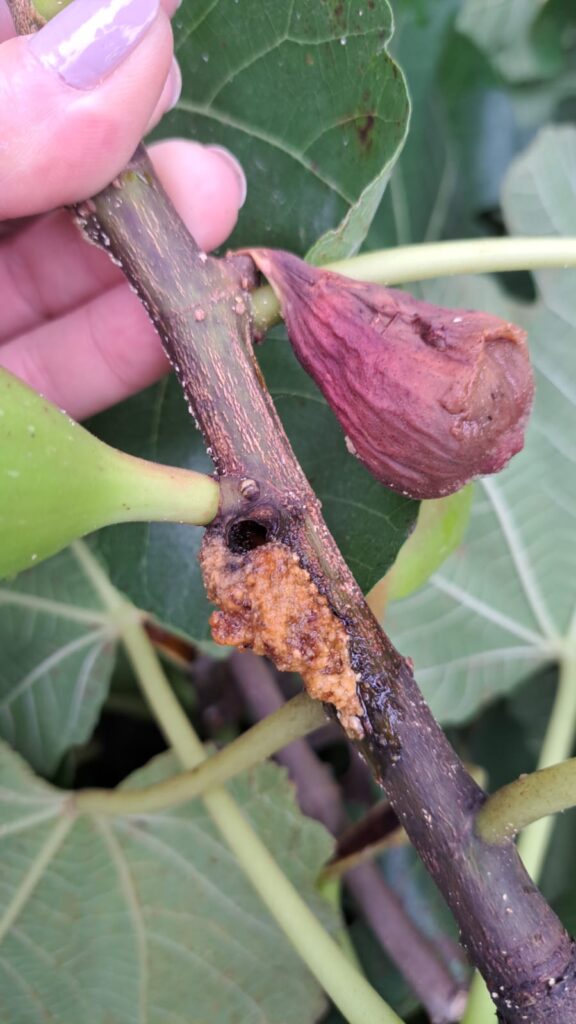
Fig tree branch (Ficus carica) attacked by the pointer borer, showing sawdust, dead fruit and a darkened branch with exudation.
How to cite: Schäffer, Naihana. 2024. Tip borer on fig tree, Garibaldi, RS. Plant Health Photo Gallery. Available in: <https://planthealthom.com/artigo/broca-dos-ponteiros-em-figueira-garibaldi-rs/>. Accessed on: January 26, 2024. (Update access date.)


